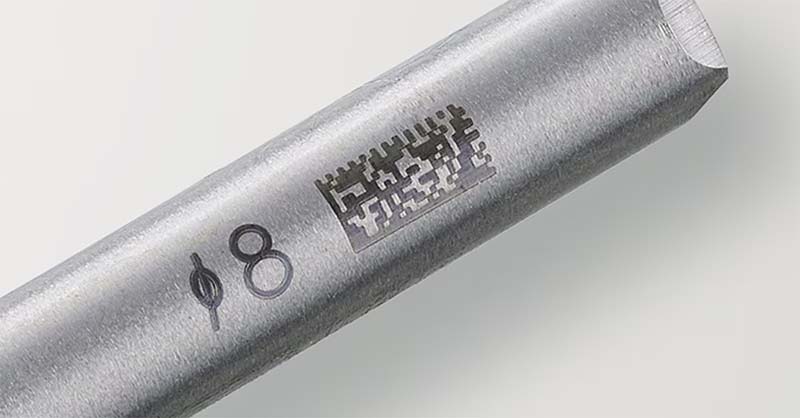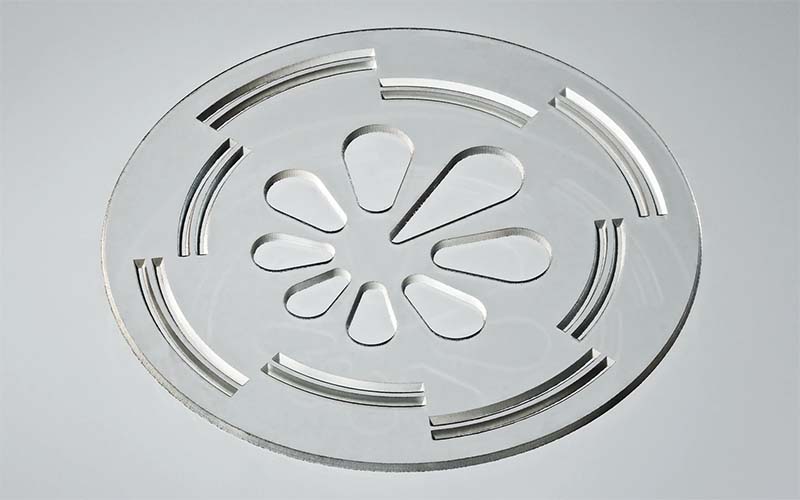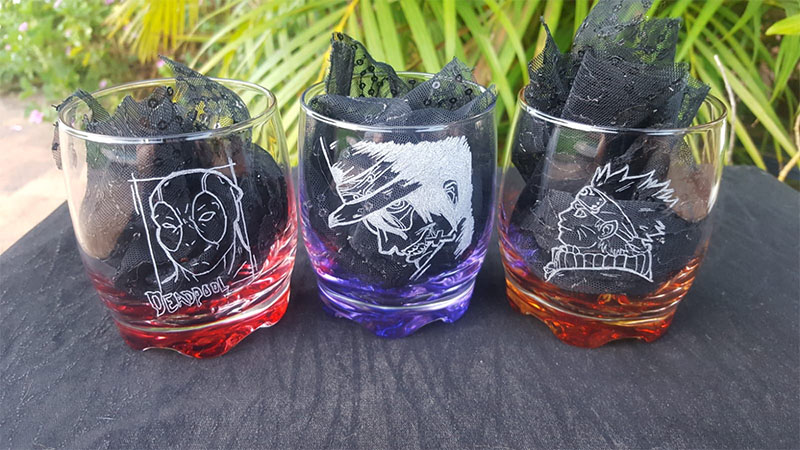With the increasing of laser application technology, the use of laser technology in various industries has become increasingly widespread. Its outstanding performance provides convenient and efficient packaging and printing solutions for numerous industries. Traditional processing methods are no longer able to meet the present processing needs, advanced laser marking machines are being employed in the food packaging. This article is about laser marking technology used in the food and drug industry and guides the user to choose the best laser marking machine for packaging according to the material.
Why Use Laser Marking for Food Packaging?
Unlike traditional marking methods, laser marking is a permanent marking technique that doesn’t wear off due to environmental changes. It employs high-density energy from a laser to instantly vaporize or chemically react with the surface material, generating a mark. This process requires no auxiliary tools, and the marked information is clearly distinguishable to the naked eye. Additionally, it doesn’t consume consumables like inkjet coders, thereby enhancing packaging security and minimizing environmental pollution. This aligns with the direction of modern green industry development.
Laser marking represents a novel approach distinct from traditional marking methods. It breaks free from the limitations of uniform and standardized marking, allowing for diverse and customized marks according to practical needs. This enhances a product’s competitiveness in a fiercely competitive market.
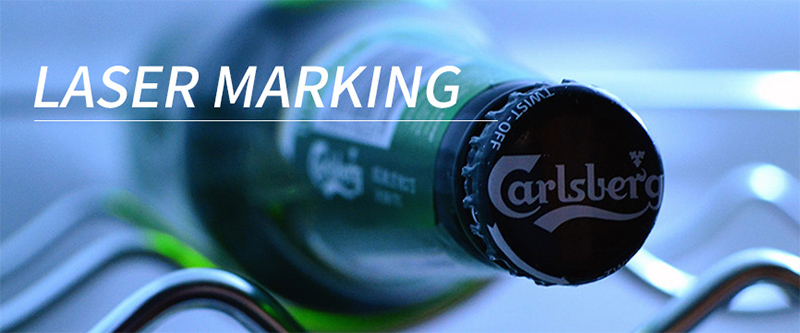
The Benefits of Laser Marking in the Food and Beverage Industry
Automatic Control: Laser marking technology, combined with computers, greatly enhances the intelligence and precision of mark printing. Utilizing modern computer software control systems, it allows customization of patterns and text for marking, while enabling various styles of laser output.
Uniqueness of Marking: Leveraging the unique capabilities of laser marking prevents easy imitation, effectively curbing the circulation of counterfeit products. By incorporating coding, barcodes, destination information, etc., laser-marked data can be linked to a database system, facilitating real-time tracking and querying of a product’s latest information.
Anti-Fake Function: Laser engraving machines utilize high-energy density laser beams to achieve fine details, with surface markings as thin as 0.1 millimeters. This innovation opens up possibilities for precision processing and anti-counterfeiting technology. It effectively shapes product appearances and brand effects.

High Precision Marking: Laser technology can precisely engrave onto the material itself with an extremely fine beam, ensuring high printing accuracy and precise control. The result is a clear and flawless interpretation of the printed content. This not only boosts market competitiveness but also contributes to environmental safety. It is non-corrosive, completely avoiding chemical pollution, reducing post-process investment, and noise pollution.
Why You Need Laser Marking on Food Labels
Laser marking offers several advantages when applied as a permanent identification method on food packaging, enhancing information dissemination and product management.
Permanence: Laser marking is an extremely durable identification method that remains unchanged under various environmental conditions. It is less susceptible to external factors like temperature, humidity, and light. This ensures that identification information remains attached to the packaging over time and doesn’t fade or blur due to the passage of time or changing environment.
Anti-Counterfeiting: Laser marking can generate highly complex and difficult-to-replicate patterns, text, or images. This makes the identification on food packaging harder to counterfeit, aiding in preventing the influx of counterfeit products into the market. This is crucial for protecting brand reputation and consumer rights.
Traceability: Laser marking enables the encoding of a large amount of information in a small and precise space. This is particularly useful for food traceability, as producers can mark unique codes on the packaging for tracing production batches, distribution channels, and other vital information when needed.
Environmentally Friendly: Laser marking is often non-contact and doesn’t require the use of chemical inks or other marking materials. This helps reduce environmental pollution and potential risks that chemicals might pose to food products. Inkjet marking involves ink that may contain chemicals, raising concerns about food safety and the environment. Numerous studies indicate that laser marking doesn’t cause any changes on the surface of products. The skin’s protective functions remain unaffected, and shelf life remains unchanged.
High Information Density: Laser marking can create intricate patterns and information in a tiny space. This means that more information, such as QR codes, barcodes, production dates, batch numbers, etc., can be included on food packaging, providing consumers with more product-related information. Inkjet marking has a relatively lower information density, making it challenging to encode a substantial amount of information within limited space, especially complex images, barcodes, or QR codes. This might limit the ability to provide detailed information on food packaging.
Exquisite: Laser marking can achieve high-precision patterns and text, resulting in clear and aesthetically pleasing markings on food packaging. This enhances the perceived quality and value of the product.
Laser engraving machines can be used to mark barcodes, expiration dates, etc., on food packaging. Common materials used in food packaging include aluminum, glass, polyethylene, various plastics, and paperboard.
Laser Marking for Plastic
Laser technology can help you achieve either fusion marking or high-contrast, high-quality marking. Laser can be absorbed by plastic materials, forming high contrast without causing combustion or material foaming. This technique can create very smooth markings for certain applications, especially in medical implants. Laser can also mark custom logos, barcodes, text boxes, and perform micro printing. By selecting the appropriate laser marking machine for plastic and specific materials, achieving high-quality marking becomes easy.

Different types of plastics are influenced by their characteristics, color, density, and design process when engraved using laser equipment. Therefore, for different plastics, specific laser devices should be chosen for marking.
Green Laser: Green lasers typically operate in the range of 532 nanometers. They are suitable for some transparent or light-colored plastics, such as PET (polyethylene terephthalate) and PVC (polyvinyl chloride). Green lasers can generate high contrast, especially on transparent plastics, aiding in clear and visible markings.
Purple Laser: Purple lasers typically operate around 355 nanometers. They are suitable for some higher molecular weight plastics like ABS (acrylonitrile butadiene styrene) and glass-like materials. This wavelength laser interacts better with higher molecular weight plastics, resulting in clear markings.
Fiber Laser: Fiber lasers offer a smaller focus diameter and higher power density, making them suitable for various plastic materials. They work for many plastic types, including ABS, polypropylene (PP), polyethylene (PE), and nylon (PA). Due to their ability to create a small focus diameter, fiber lasers can achieve high resolution and fine marking on these plastics. For plastics with hazardous components like chlorinated polyvinyl chloride (CPVC) and polytetrafluoroethylene (PTFE), special attention is needed to the gases and vapors generated during the cutting process.
Solid-State Laser: Solid-state lasers typically provide high power output. They are suitable for various plastic types such as PET, PVC, polycarbonate (PC), PMMA, and acrylic. Due to their high power output capability, solid-state lasers can achieve high-quality markings even on relatively hard plastics.
Laser Engraving Marking Paper: Gift Box
Cosmetic packaging boxes, cigarette boxes, packaging boxes for small electronic products, high-end industrial packaging boxes, tea sets’ packaging boxes, supplement packaging boxes, various cardboard boxes in transportation packaging. All of these delicate texts and patterns on thin paper boxes, hard paper boxes, and corrugated paper boxes are closely related to laser marking technology.
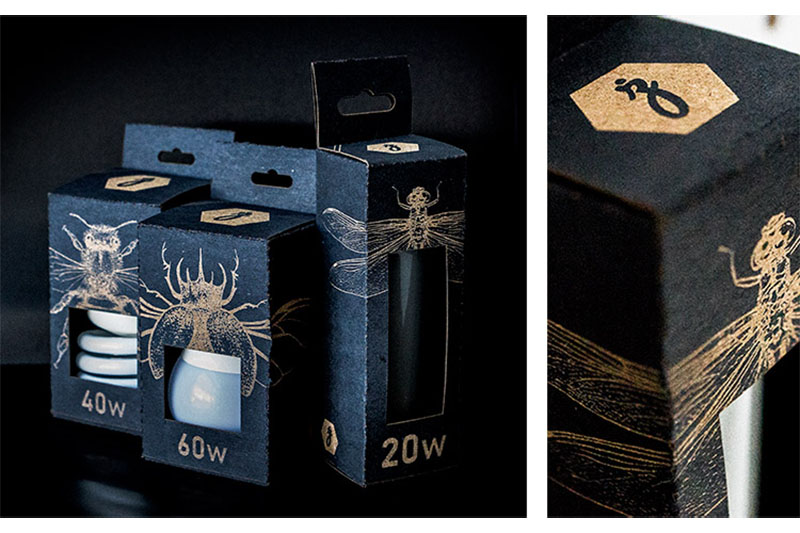
For marking paper package, fiber and CO2 laser engraving machines are often considered. They offer high speed, high cutting precision, high stability, and excellent cost performance, making them suitable for clear and long-lasting marking on paper boxes. With CO2 lasers, you can process materials like wood, plywood, acrylic, ceramics, leather, plastic, rubber, and some metals. These machines typically have a closed design, making them suitable for home use and perfect for small laser marking businesses.
Laser Parameter Settings: When choosing laser parameters, adjustments need to be made based on the color, thickness, and desired marking effect of the paper box. Typically, a balance needs to be struck between marking depth and preserving the appearance of the paper box.
CO2 Laser Marking Machine for Carton Cardboard Box
Surface Etching: This involves engraving patterns, text, barcodes, etc., onto the surface of the paper box. By adjusting laser power and speed, the depth of etching can be controlled to achieve a clear and visible mark.
Color Change Marking: Certain laser devices can change the color of the paper box in the heated area by adjusting power and pulse modes, achieving a marking effect. This method works better on boxes with darker or layered colors.
Laser Cutting: If cutting or engraving on the paper box is needed, appropriate power laser equipment can be used to achieve precise cutting effects.
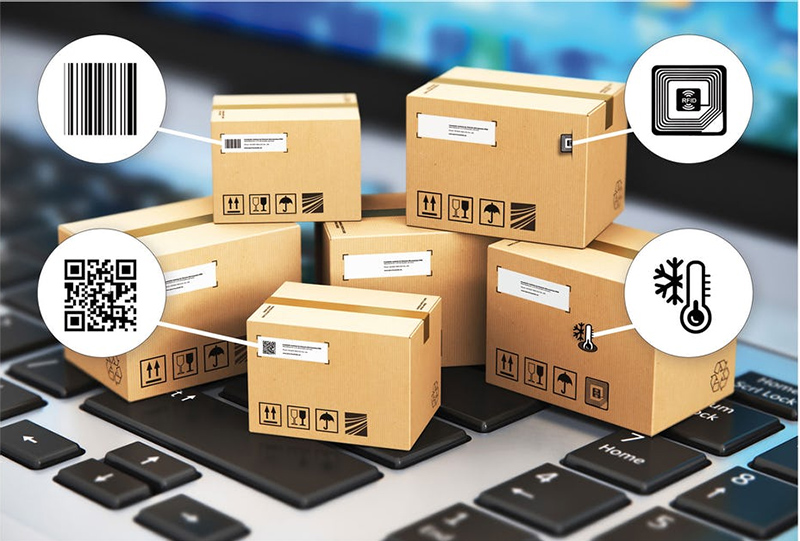
CO2 laser technology can significantly enhance marking speed and conserve resources, easily replacing traditional methods of paper box marking like hot marking, inkjet printing, and adhesive labels. Whether in terms of the quality of the marking effect or the convenience of operation, it can meet the requirements of the food packaging industry for product labeling.
In the food packaging industry, accuracy and clarity in labeling are crucial. This type CO2 laser marking equipment boasts high resolution and precision, enabling the realization of various intricate patterns, text, and barcodes, ensuring that each product is presented to consumers in exquisite appearance.
The auxiliary accessories, components, parameters and laser power of the laser marking machine can be customized according to the needs of food and medicine production line.
Whether you need date codes, batch numbers, trademark logos, or any other labeling requirements for food packaging, this brand’s laser marking machines, including fiber laser markers, CO2 laser markers UV laser markers and EP EP laser marking machine can meet your needs. They can be widely applied to various packaging materials such as plastics, paper boxes, metals and play a significant role in the food industry.
Conclusion:
In the future of technological advancement, laser marking machine uses in 3D printing and marking for food packaging processing. They can help you address more real issues and contribute to building a top brand. DPLaser’s laser marking machines provide clear markings, fast operation speeds, high production yields, and pollution-free processes, earning the support and trust of numerous customers.

